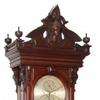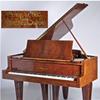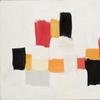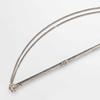19th Century Art: Evaluating and Collecting
- January 22, 2014 13:25
Many painters of the 19thcentury are admired by Ackerman’s Fine Art. We have come to truly appreciate their perspective of the world and what inspires them. Some of these works have not been seen for a generation and it is exciting when a new work from an admired artist is shown to us.
Kenny Ackerman has developed his eye enabling him to recognize an authentic and good quality painting. The learning process never ends and that is part of the fun. Here we would like to share some our knowledge and help you, as a collector, develop your eye and collect wisely.
Finding Quality
There are many elements to look for when evaluating a painting from this time period. The quality of the painting is paramount. Also considers the subject, use of light, technique, date it was painted, the success of the overall composition and condition. It’s important to compare all these elements to other works by the same artist and watch how the art market responds to different examples of the artist’s work.
Authenticating a painting
Authenticity is critical for artworks from this century (and any century really). As artists from this period have risen in popularity, so have forgeries and commercial reproductions. A painting may appear to be in the style of a particular artist, but may in fact have been painted by an art student or an unknown contemporary of an artist trying to duplicate a technique. Authenticating an artwork requires a highly trained eye and a good network of research sources. These could include museum curators and other scholars. You need to determine who the official authority is on a particular artist and what kind of documentation they can provide.
Evaluating Restoration
Another important consideration is the amount of restoration that may have been done on a painting this age. Some restoration is common and if done well may not hurt the value. However, some important examples of an artist’s work have been dramatically restored with outdated or poor quality practices. When in doubt, Ackerman’s will consult with a reputable restorer. It may best to avoid works that have more than 15% inpainting done on the surface.
Collecting 19th century American and European art a good strategy for those also hoping to build a collection that will likely increase in value over the years. The most important advice we can offer is to study the artists or school of artists you are most interested in by visiting museums and reading books that help you understand the careers, influences and nuances of their style. If you find a painting you want to acquire (or sell), make sure you are fully informed on how that painting compares with others and what effects the condition and provenance will have on it’s value.





















